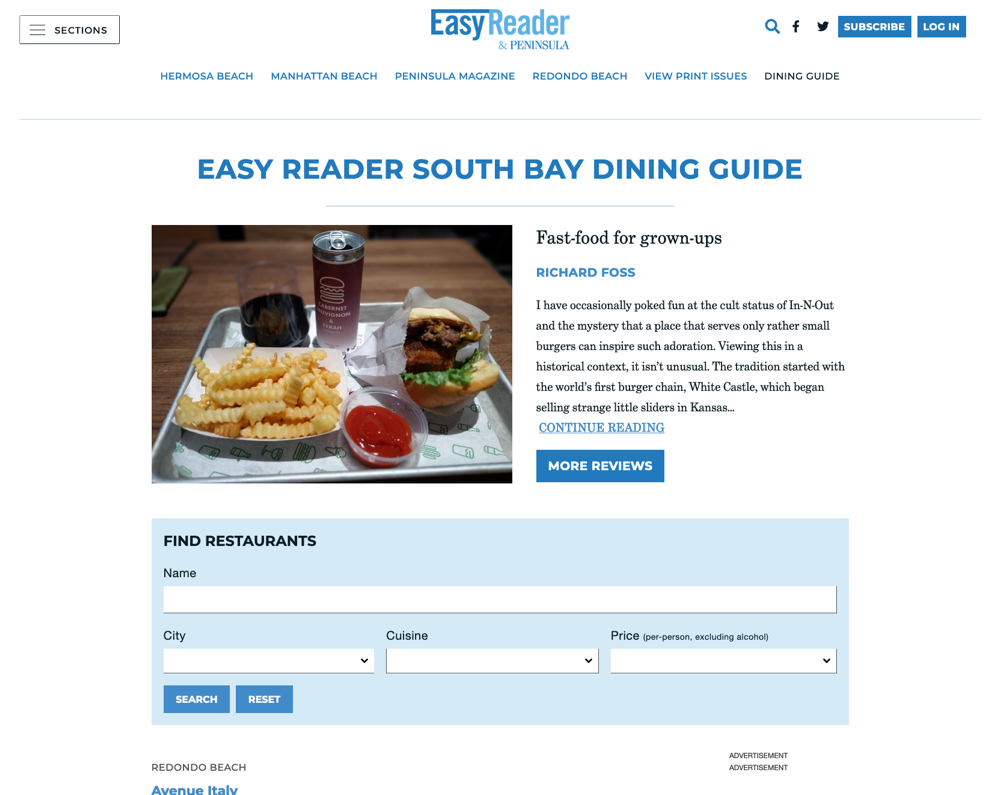Helping Easy Reader’s Audience Find a Place to Dine Tonight
As part of its ongoing support and maintenance work with Easy Reader, Webinista, Inc. developed the South Bay Dining Guide, to give the publication an evergreen product to encourage visits and boost ad sales. This post is an overview of the implementation details.
Webinista, Inc. inherited the architecture of this site, but made the decision to depart from that architecture for this feature. Easy Reader was developed using:
- Beaver Builder, a drag-and-drop page builder for WordPress sites;
- a child theme that uses Beaver Theme as a base; and
- the Classic Editor plugin.
While great for building brochure-style web sites, I think Beaver Builder works less well for news and magazine style publications. These kinds of publications have standardizable content types that can and should use consistent layouts for each type.
Since Easy Reader has not made the transition to Gutenberg, I chose to use WordPress’ classic templating system. This meant adding two template files: a template for displaying a single restaurant, and an archive template for the landing page. I also created a plugin that adds a Restaurant custom post type.
Why custom post types?
Using a custom post type:
- encourages standardized data/information gathering;
- makes it easier to display that data in a consistent, templatable form; and
- makes it
easier to restricteasy to limit searches to a particular kind of post, and its related WordPress taxonomies.
I added Cuisine, City, and Price Range taxonomies for this post type, and made everything available to the REST API.

A screen shot of the Dining Guide's landing page.
WordPress’ REST API makes posts available as JSON instead of HTML pages. It also makes it easy to run complex searches across multiple criteria. Easy Reader Dining Guide searches are simply a GET request to the JSON API with the restaurant name, cuisine, city, and/or price range sent as query parameters. The list of restaurants gets replaced or appended when the browser receives a the server's response.
Using the REST API also means that Easy Reader can take advantage of decoupling at a future date. They're well-positioned to use a JavaScript framework such as React, or NextJS for the reader-facing portion of their site.
WordPress’ Future and the Classic Editor
Although the South Bay Dining Guide uses WordPress’ templating system, WordPress is moving toward a What You See Is What You Get (WYSIWYG) or pagebuilder style editing experience. It's a radical departure from the old way and requires significant redevelopment work of existing WordPress themes.
Back in 2018, the WordPress contributor team promised to continue development, of the Classic Editor Plugin through 2022. Although the Classic Editor will likely continue to work beyond that date, continued development isn't guaranteed. I recommend that legacy WordPress users begin to make the switch. Webinista, Inc. can help you with this. Get in touch, and let's talk about your project.